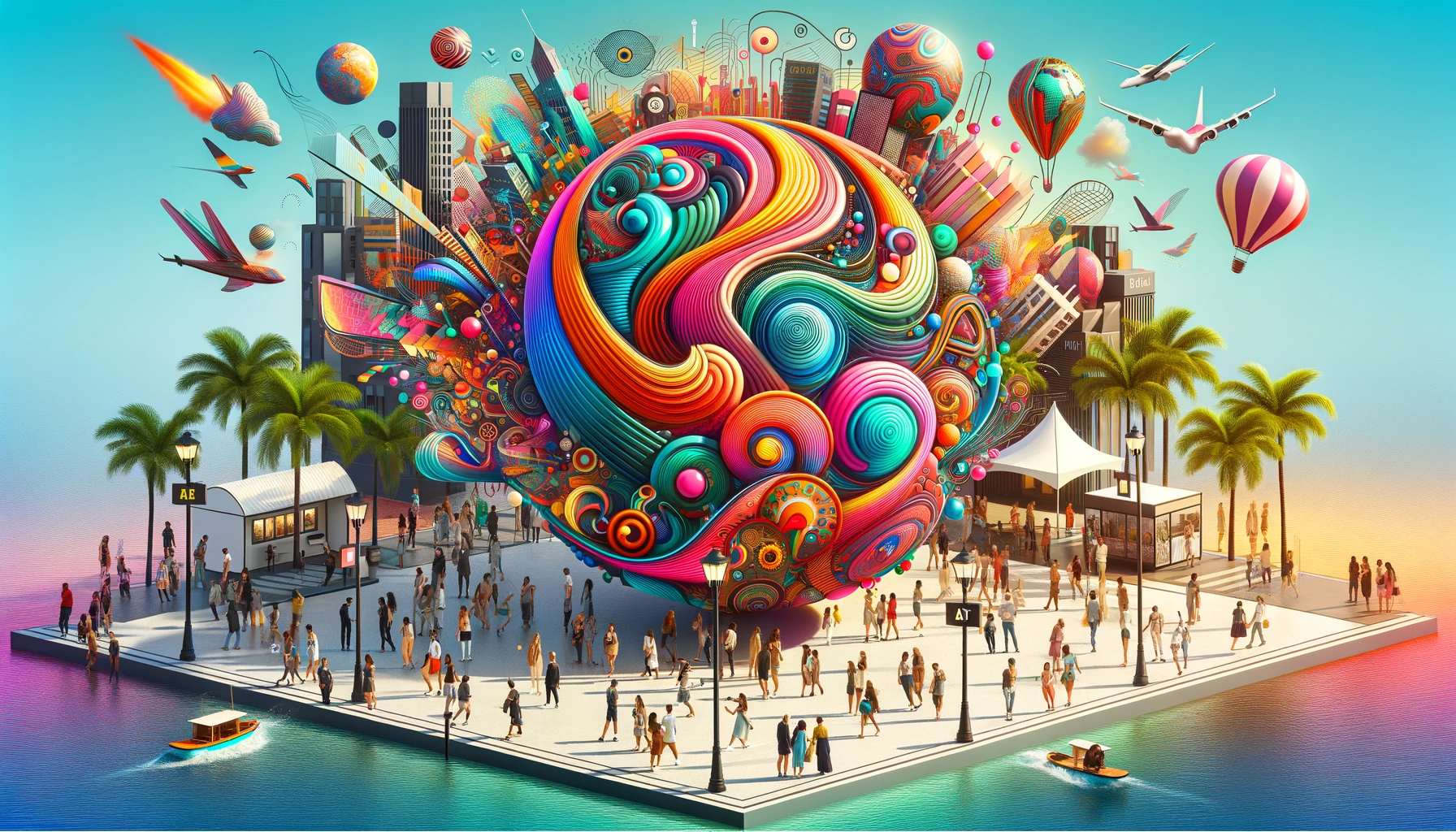Art Basel Miami 2023: Less Spontaneous, Frenzied Buying, and More Measured Engagement
Art Basel Miami Beach 2023 emerged as a testament to the nature of art fairs, transcending their traditional commercial role and expanding their influence to embrace a broader audience.
Vincenzo de Bellis, the Director of Fairs and Exhibition Platforms at Art Basel, acknowledged the multifaceted role these events play, transitioning from pure commercial endeavors to influential global platforms shaping artistic narratives.
A Cultural Phenomenon in the Heart of Miami
Situated at the heart of Miami's vibrant art week, the fair retained its stature as America's premier art destination, offering a crucial gateway to the burgeoning Latin American art scene. The December ambiance in Miami, known for its cultural richness and warmth, lent an unmistakable festive air to the proceedings, setting it apart from other art fairs.
Reflecting on the broader role of art fairs, de Bellis noted, "Fairs, and especially our fairs, are no longer pure commercial affairs." He emphasized that while the commercial aspect remains central, fairs have evolved into moments akin to what biennials represented in the past—an opportunity to witness global perspectives and catalyze connections across borders.
This evolution was particularly evident at Art Basel Miami Beach, renowned as America's most prestigious art fair. Beyond being a significant forum for the U.S. art market, it serves as a vital point of access to the thriving Latin American art market. The general atmosphere of the fair resonates with the spirit of Miami in December—an infectious vibe complemented by top-tier institutions, fair weather, beach culture, and a well-established reputation for hedonism.
Resilience Amidst Economic Uncertainty
In the context of a global economic downturn, the resilience of the art market stood out. Collectors remained enthusiastic, defying financial concerns to engage with art actively. Galleries such as Hauser & Wirth and Kurimanzutto reported a continuation of sales, with a notable trend toward stable and risk-averse investments. This conservatism in art choices mirrored broader cultural shifts, potentially influenced by the pandemic's impact on artistic practices.
Galleries reported robust sales across all market segments, including works by 20th-century luminaries such as Carla Accardi, Philip Guston, René Magritte, Alice Neel, Keith Haring, and Mildred Thompson; prominent contemporary artists such as Yayoi Kusama, Barbara Kruger, Tracey Emin, Lynda Benglis, Marlene Dumas, and Rashid Johnson; outstanding practitioners from Latin America and the Caribbean including Esaí Alfredo, Firelei Báez, Hélio Melo, Teresita Fernández, Hector Dionicio Mendoza, and Jorge Méndez Blake; and emerging voices such as Reginald O’Neal, Erin Jane Nelson, Noémie Goudal, Tau Lewis, Qualeasha Wood, and Clio Sze To.
A pinnacle moment at the fair unfolded at David Zwirner gallery, where a painting by Marlene Dumas, titled “The Schoolboys” (1986–87), achieved an astounding $9 million. This landmark sale marks a new personal high for Dumas in tracked market transactions, eclipsing her previous auction record of $6.3 million in 2008. Amidst a whirlwind of high-value sales, the Dumas piece emerged as a standout, capturing attention as the highest-priced work sold on Thursday.
The Quest For the Next Viral Artwork
While the absence of a singular viral artwork was apparent, the fair presented outstanding presentations, particularly in sculpture and photography. The Meridians section, dedicated to large-scale works, transcended the commercial context, providing a curated space for pieces grappling with themes of nature and our collective relationship with an evolving identity landscape.
The quest for the next viral artwork took an intriguing turn. The UBS Lounge featured Anthony Olumbunmi Akinbola's "Fantasy World (2023)," a claw machine filled with toys and candy. This participatory installation added a layer of contemplation on chance and the perceived value of winning within an art fair.
Galleries, while emphasizing substantive curation, acknowledged the unique platform Art Basel Miami Beach provides for engaging and thought-provoking installations. Ai Wei Wei's "Washington Crossing the Delaware (2023)" at neugerriemschneider and Andrew J. Greene's "Timeless Symbols (Negroni) (2023)" at the Modern Institute exemplified this nuanced approach, blending artistic significance with accessible elements.
Measured Pace Amid Financial Challenges
In a year marked by financial challenges and a subdued market, the fair's pace appeared more measured. The absence of a singular viral artwork was underscored by a sense of reflection, emphasizing the adaptability and resilience of the art world in navigating complex times.
Art Basel Miami Beach, in its pursuit of a delicate equilibrium between commerce, culture, and artistic exploration, remains a beacon of artistic discourse. As the art world eagerly anticipates future editions, the hope lingers that they will continue to encapsulate the unexpected, ushering in new narratives, artistic expressions, and, perhaps, the return of the unforeseen and attention-grabbing works that characterize the spirit of the fair.

